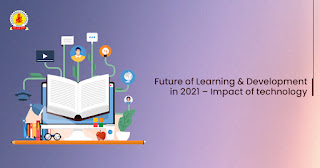Impact of Learning and Development Technology - Arya College
Things move fast in the tech industry. Regardless of the type of business, whether private or public, non-profit or profit, SMEs or mega-corporations, the majority of companies rely on their employees for growth, new ideas, and success. To advance faster and be more confident in their profession, students of top engineering colleges in Jaipur get constantly engaged, learn and expand their talents. There is little doubt that upskilling their personnel will help companies achieve greater success in the future. With the surge in demand for cybersecurity professionals in the current days, there are more cybersecurity jobs in the market than those eligible for the job. If the trend continues in the coming days, cybersecurity jobs will be in high demand. Engineering Colleges in India have started different courses which are relevant to the changing scenarios.
Top technologies that are changing learning and development are as follows:
1. The rise of mobile and tablet devices
The term “mobile learning” refers to any learning that takes place on a mobile device. Tablets, cell phones, and eReaders fall within this category. Mobile technology offers a wide range of possibilities to enrich educational content and invent new forms of learning to the students of best engineering colleges in Jaipur, whether in the classroom, at home, or in offices. The primary benefits of successful mobile learning and development experiences include better access to course content, more engagement with other students and teachers and mentors, the ability to learn more about the topics covered, greater work quality, and higher motivation.
It allows engineering students to study when and where they want, as well as at their own speed. Track student progress and discover bottlenecks using statistics and analytical tools. One of the most important benefits of mobile learning is the ability to personalize monitoring and adjust the learning path based on each student’s progress.
2. The increase in ‘bringing your own device to work’
Allowing employees to use their own laptops, tablets, smartphones, or other devices for work is known as Bring Your Own Device (BYOD). It has grown in popularity in recent years as a means of allowing employees to work from home or on the go while still having access to their company’s network and data. The enormous need for home working has emphasized the trend even more.
3.The gamification of learning
The gamification of learning may help students of BTech Colleges in India generate innovative, instructional, and entertaining content regardless of your audience or topic matter. It is not meant to transform work into a game, but it does tap into the psychology that motivates people to engage.
The benefits can be extremely pleasant and motivating. One of the main advantages of gamification is that it makes learning more interesting and instructive, owing to its interactivity. Role-playing and competitive components offer an immersive element that, when done right, may make learning enjoyable. While choosing one goal for learning, it would undoubtedly be to embed new knowledge in your students.
Another unexpected benefit of gamification in learning is the natural high it can provide, as well as the impact that ‘high’ has on knowledge retention. When our brain tries to reward us, it releases dopamine into our body, so we feel good when we win a game or do something significant. For many people, learning new things is a pleasurable experience for the students of engineering colleges Jaipur that results in dopamine production, and the very fortunate side effect of that natural drug ‘fix’ is that the boost in dopamine levels aids in the retention of that new knowledge. The third benefit of gamification is all about getting your hands dirty. Learning on the job can be a very effective way of cementing skills by applying them to practical scenarios.
4.The opportunity to interact virtually
Students of private engineering colleges in Jaipur may need to work a little more in order to get groups of students conversing and engaged in your virtual classroom. However, the good news is that most video conferencing platforms come with a variety of useful capabilities. It is observed that the communication in a virtual classroom differed significantly from communication in a traditional classroom. It is actually quite straightforward. You can have as many people talking at once in a physical classroom as there are individuals in the room, and pair and group work can be employed to optimize the time your students have to practice speaking in English. However, you can only have one person speak at a time in a virtual classroom.
Instructors, L&D professionals, and learners can exchange and access a variety of material, from quizzes and questionnaires to photographs and tips, by creating online groups or using hashtags. Because social media is not supposed to be a source of distraction.
5.The assessment of progress
As technologies are advancing, tracking your progress has never been easier. Today’s tech is smart enough to provide feedback to learners on the go. Focused, specific feedback aids students in comprehending learning objectives, making course corrections throughout the learning process, monitoring their own progress, selecting the best strategies for the task, and deciding where to go next.
In other words, their e-learning and online modules, learners will receive a more personalized, targeted, and effective approach. Self-reflection and improvement are considerably easier for the students of top BTech colleges Jaipur with more formative sorts of examinations.


Comments
Post a Comment